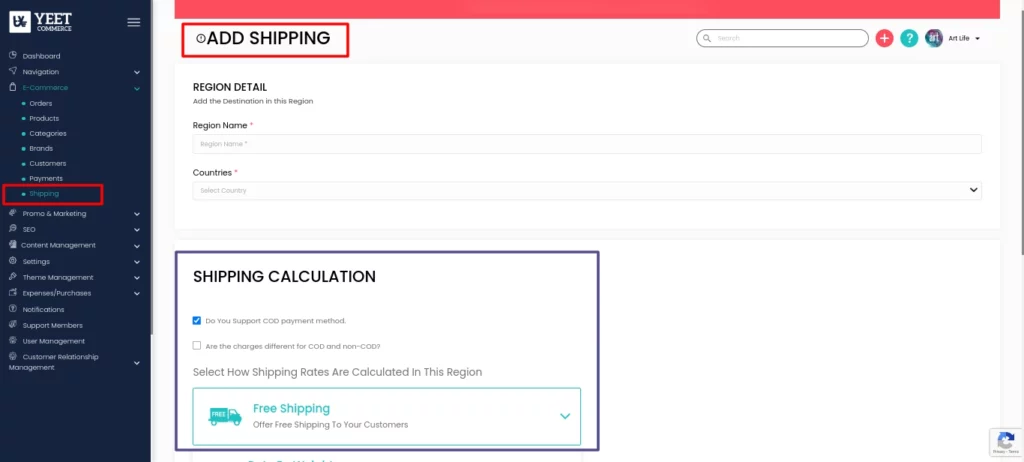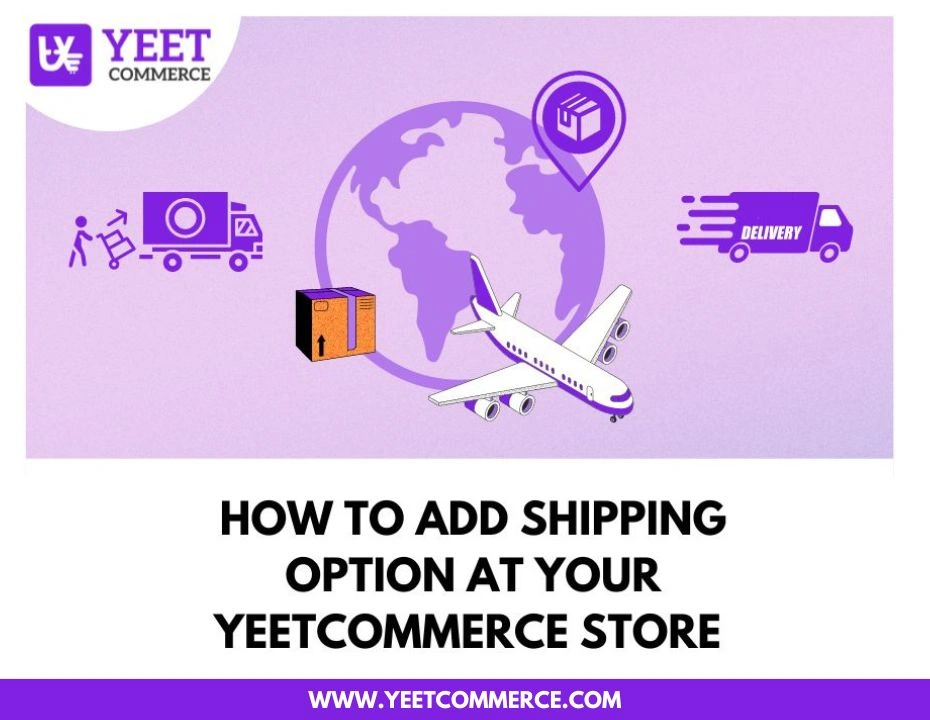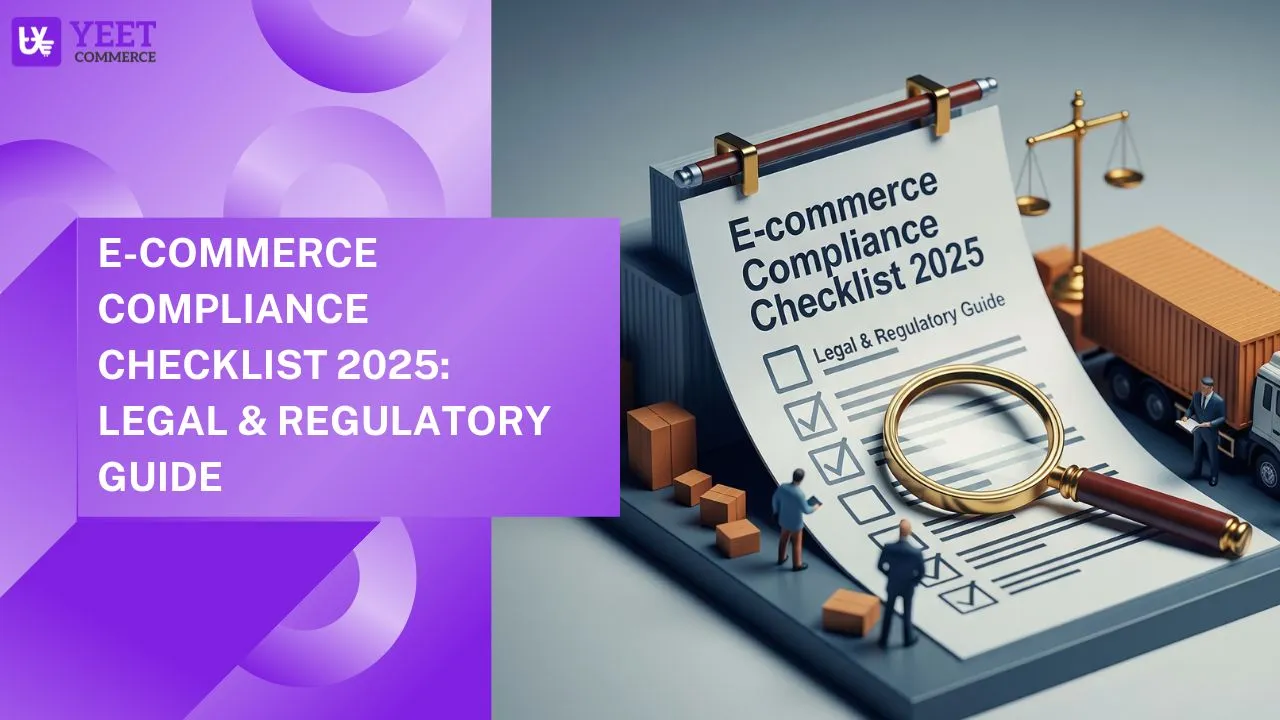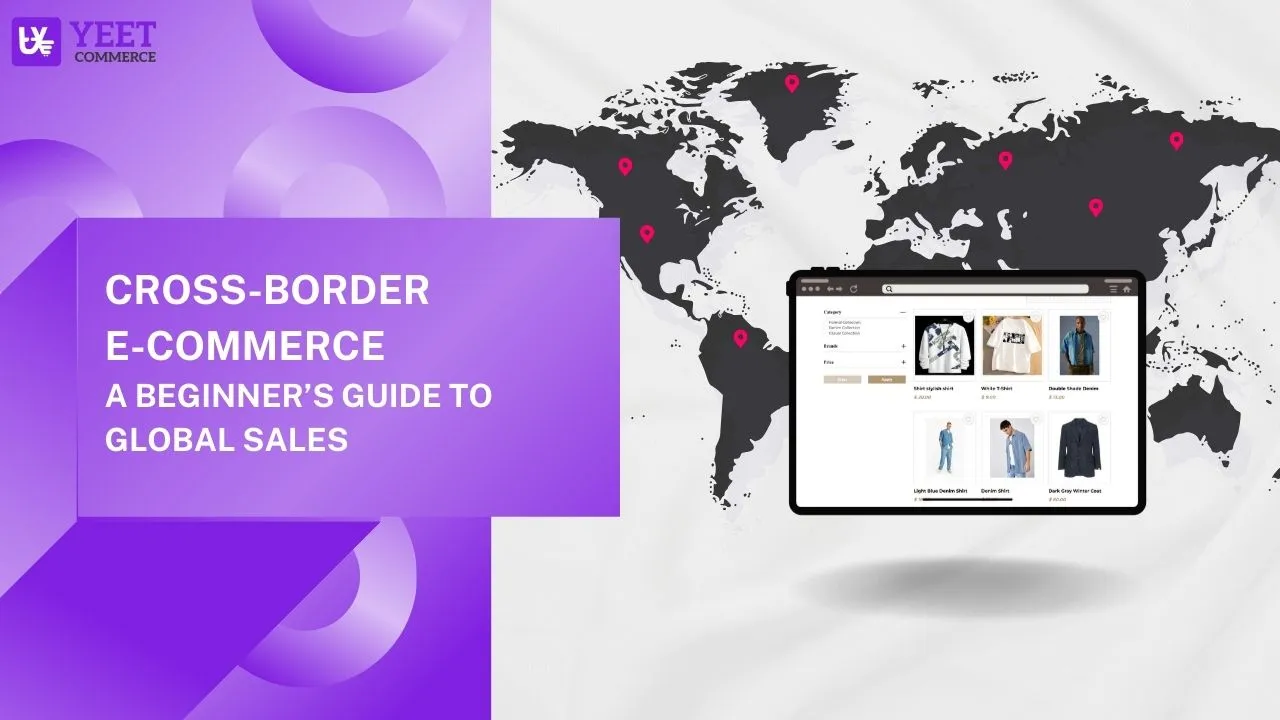Navigating the world of eCommerce shipping solutions can be daunting, but it doesn’t have to be. In this comprehensive guide, we’ll walk you through the various types of eCommerce shipping solutions available, provide a step-by-step guide for integrating these solutions with your eCommerce platform, discuss the benefits of offering custom shipping options, and help you understand the legal and compliance requirements. By the end of this guide, you’ll have a solid understanding of how to optimize your shipping process, making it efficient and customer-friendly. If you’re looking for a reliable platform to help you manage these processes seamlessly, check out YeetCommerce.com
Types of Shipping Solutions: Exploring Your Options
When it comes to eCommerce shipping solutions, you have a plethora of options to choose from. Each solution has its own set of advantages, and understanding these can help you make the best choice for your business.
1.Standard Shipping: This is the most common type of shipping solution. It’s cost-effective and generally reliable, making it a popular choice for many eCommerce businesses. Customers usually expect their orders to arrive within a week when they choose standard shipping.
2.International Shipping: Expanding your reach to international markets? International shipping solutions can help you deliver products across borders. Be prepared for higher shipping costs and longer delivery times. It’s essential to work with a reliable carrier to navigate customs and regulations.
3.Dropshipping: With dropshipping, you don’t need to keep products in stock. Instead, you partner with a supplier who ships products directly to your customers. This solution can reduce overhead costs and simplify inventory management, but you’ll need to ensure your suppliers are reliable.
Step-by-Step Integration: How to Seamlessly Integrate Shipping Solutions
Integrating shipping solutions with your YeetCommerce platform is crucial for a smooth operational workflow. Here’s a step-by-step guide to help you through the process:
1.Assess Your Needs: Start by evaluating your shipping requirements. Consider factors such as order volume, shipping destinations,Free shipping, Rate By Weight, rate by price and store pickup only.
2.Choose a Shipping Carrier: Based on your assessment, select a shipping carrier that aligns with your needs.
3.Set Up an Account: Create an account with your chosen carrier. Most carriers offer business accounts with additional features and discounts.
4.Integrate with Your eCommerce Platform: eCommerce platforms YeetCommerce offer built-in integrations with major shipping carriers. Utilize these integrations to automate the shipping process.

Steps to Adding Shipping Options in YeetCommerce.com
- Navigate to Shipping Settings: Login to your YeetCommerce dashboard and navigate to the E-Commerce tab. Click “Shipping” to access the settings.
- Add a New Shipping Option: Click the “+” icon next to “Shipping” to open the “Add Shipping” page.
- Define Your Option:
- Name: Choose a clear and recognizable name (e.g., “Standard Shipping”, “Express Delivery”).
- Location: Select the countries, states, or cities this option applies to.
- Payment Methods: Specify accepted payment methods (e.g., credit card, COD).
- Set the Shipping Rate: Choose the most suitable structure:
- Free Shipping: Entice customers with free delivery.
- Weight-Based Rates: Base costs on product weight.
- Price-Based Rates: Set costs according to order total.
- Store Pickup: Allow in-store collection.
- Flat Rate: Charge a fixed fee regardless of weight or location.
- Save and Confirm: Click “Save” to create your new shipping option.
5.Configure Shipping Settings: Customize your shipping settings based on your business requirements. This includes setting shipping rates, delivery options, and packaging preferences.
6.Test the Integration: Before going live, thoroughly test the integration. Ensure that shipping rates are calculated correctly and that orders are processed smoothly.
7.Monitor and Optimize: Once integrated, continuously monitor your shipping process. Gather customer feedback and make necessary adjustments to improve efficiency and satisfaction
Custom Shipping Options: Elevating the Customer Experience
Offering custom shipping options can greatly enhance your customers’ shopping experience. By providing flexibility and personalization, you can meet diverse customer needs and stand out in a competitive market.
- Multiple Shipping Options: Offer a variety of shipping options, such as standard, express, and overnight shipping. This allows customers to choose the delivery speed that suits their needs.
- Free Shipping Thresholds: Encourage larger orders by offering free shipping on purchases over a certain amount. This not only boosts sales but also improves customer satisfaction.
- In-Store Pickup: If you have a physical store, offer in-store pickup as a shipping option. This is convenient for local customers who want to avoid shipping fees and receive their products faster.
- Custom Packaging: Enhance the unboxing experience by offering custom packaging options. This can include branded packaging, eco-friendly materials, or gift wrapping.
- Real-Time Tracking: Provide real-time tracking information for all shipments. Customers appreciate the ability to track their orders and stay informed about delivery status.
Legal and Compliance: Navigating Shipping Regulations
Understanding shipping laws and compliance requirements is essential to avoid legal pitfalls and ensure smooth operations. Here are some key areas to consider:
- Customs Regulations: If you’re shipping internationally, familiarize yourself with the customs regulations of your target countries. This includes understanding duties, taxes, and prohibited items.
- Shipping Restrictions: Certain products, such as hazardous materials or perishable goods, have specific shipping restrictions. Ensure you comply with these regulations to avoid fines and delays.
- Carrier Policies: Each shipping carrier has its own policies regarding packaging, insurance, and claims. Familiarize yourself with these policies to avoid unexpected issues.
- Data Protection: Protect your customers’ personal information during the shipping process. Ensure your eCommerce platform and shipping carriers comply with data protection regulations, such as GDPR.
- Returns and Refunds: Clearly define your return and refund policies. Make sure they comply with consumer protection laws and are communicated effectively to customers.
By exploring the various types of eCommerce shipping solutions, integrating them seamlessly with your platform, offering custom shipping options, and understanding legal requirements, you can create a robust and customer-centric shipping strategy. This not only improves operational efficiency but also enhances customer satisfaction, leading to increased loyalty and business growth. For a platform that supports all these features and more, consider using YeetCommerce.
We’re Here to Help!
If you have further questions or require assistance, please don’t hesitate to reach out our customer support. We’re committed to your success on YeetCommerce. Thank you for reading!



















